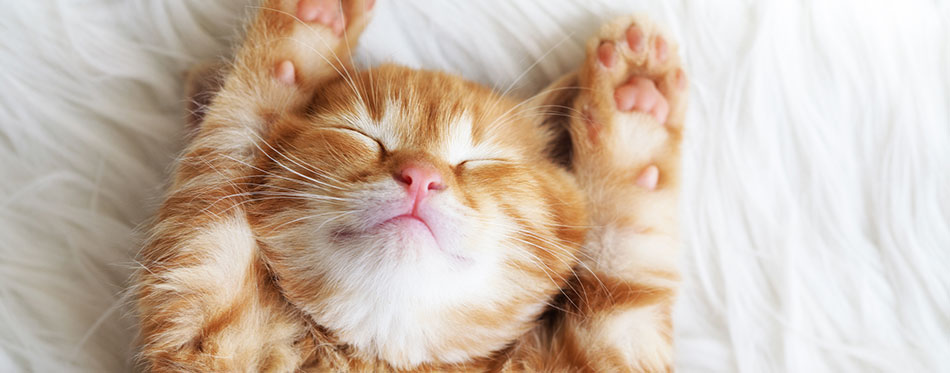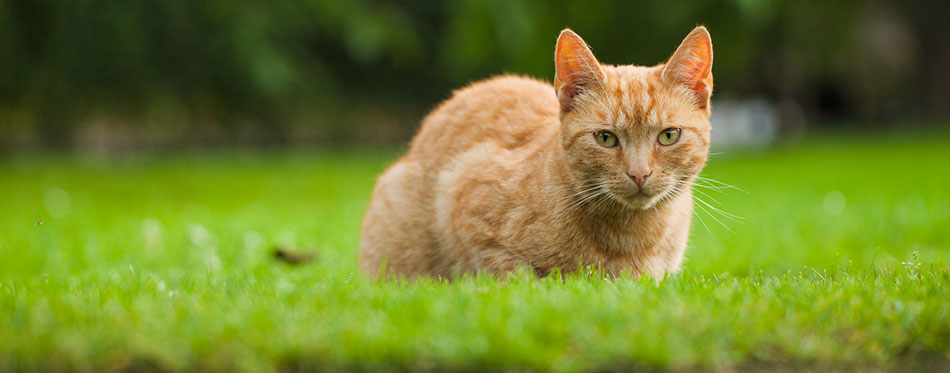You might think that cats knead because they are trying to master one essential skill in baking. No one can be 100 percent certain why domestic cats perform this quirky behavior. However, there are several hypotheses that can help explain why felines behave this way. In this article, we shall explore these hypotheses as to why cats seem to have a knack for kneading.
Kitten’s Instinct
One of the most popular assumptions as to why cats knead has something to do with their instinct as kittens. When kittens nurse from their mothers, they tend to push down on the teat of the breast. They alternate their pushing motion in an attempt to stimulate the expression of milk. It is possible that this “action” is already ingrained in the “psyche” or personality of domestic cats. Whatever gets ingrained can be difficult to extinguish or eliminate.
This kneading behavior is not only evident in kittens, however. Almost all mammals, including humans, have this “kneading” action. If you try to observe a baby sucking milk, you may notice some hand movements that resemble pushing motions. You can see these movements in puppies, too.
The assumption is that kittens associate the kneading motion to the pleasure of drinking milk from their mothers. They also learn to associate the action with the comfort that they get. There is one flaw in this assumption, though. If cats associate the kneading motion with rewarding comfort, shouldn’t dogs display this behavior, too?
Sign of Affection
In relation to the rewarding comfort that kittens obtain from their mothers whenever they nurse, they also learn feline maternal love. They tend to associate the kneading action with the comfort they felt from their mother. And now that you are their “mother”, they still perform the kneading action.
As such, there are cats that tend to knead when they are on their owner’s lap and petting them. For these cats, the situation brings to mind those times when they were still kittens. It allows them to relive their experiences with their mother.
The problem with this is that the cat may not know that its kneading action may already be hurting its owner. Some owners may shove the cat to the side. Under no circumstance should you do this. It is important to understand that the cat has no intention of sinking its claws on your lap or abdomen. If you punish it for doing so, then there is a chance that the cat will look at it as rejection. Cats do not take kindly to rejection.

Preparing the Bed
Another hypotheses to help explain the kneading behavior of cats has something to do with their sleep rituals. Feline behaviorists believe that the ancestors of the modern domestic cat often tread down foliage or grass in an attempt to make a comfortable bedding. The notion is that wild cats prefer sleeping on a bed of soft leaves of grass than on hard, rocky surfaces. Find out more about cat beds here.
Cats that are about to give birth also display such a behavior. They tend to create a more comfortable “nest” for them to deliver their litter. Feline historians believe that this behavior is innate in all mammals. Mothers only want the most comfortable place to give birth, after all.
There is another plausible explanation as to why cats in the wild tread down grass. By pushing down on leaves or tall grass, they are also scouting their surroundings. They need to do this to make sure that there are no predators or any other unwelcome visitor that can pounce on them when they are already resting.
A Form of Exercise
If you look at the kneading movements of cats, it mimics another feline behavior that every cat parent is familiar with. Kneading is almost similar to scratching, although the latter has a different primary purpose.
Nevertheless, it is possible that kneading is another way for cats to exercise by allowing them to stretch their limbs. Some pet parents think that the kneading behavior of cats is their way of loosening up their muscles and joints right after waking up.
Think of it this way. The moment you wake up in the morning, what is one of the very first things you do? You try to stretch your arms and extend your back as far as you can, right? This is almost the same thing with the kneading motion in cats.

Territorial Marking
We know certain dogs to be territorial but when it comes to one’s sense of ownership, very few species of animals can come close to the territorial nature of the cat. This is one of the most likely explanations as to why cats knead.
Inside each soft pad of the cat’s paws are scent glands. These produce and secrete pheromone-like substances that serve as territorial markers. When a cat presses its paw pads against a surface, it also presses on these scent glands. What happens next is the release of substances that get left onto the surface.
As such, when you see your cat kneading a pillow or a certain surface, it is possible that it is leaving its mark on that surface. Your feline friend is letting other cats know that this surface is its property or part of the feline’s territory.
Fertile Period
Some feline behaviorists observe that female cats tend to increase their kneading behavior right before going into heat or “estrus”. It would seem that kneading is a female cat’s way of announcing to the male feline population that it is ready to mate.
How this works still baffles cat fanciers, however. It is possible that the pressing of the paws against a particular surface also releases chemicals. This makes it a lot similar to territorial marking. The only difference is that the substances left on the surface act as pheromones to attract male cats.
It is quite difficult to explain why cats have the peculiar behavior of kneading. It can be due to a cat’s still-intact kitten instinct or as a means of marking its territory.
Source:
- Why Do Cats Knead? – Blue Cross

